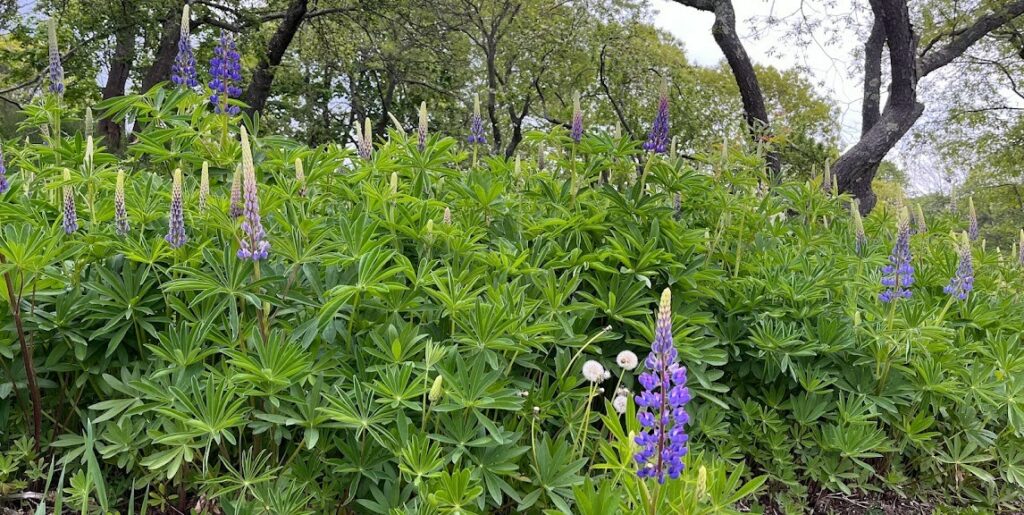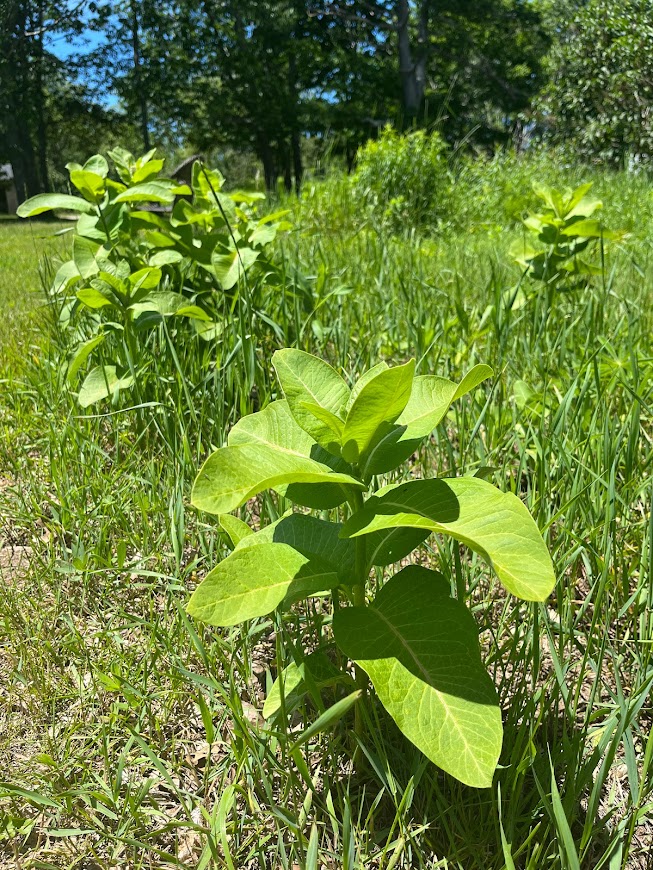Bright purple lupine flowers pop up all across Maine each spring — you’ve probably seen them in the fields at Turkey Hill Farm. Many may recall the children’s book Miss Rumphius, where she distributed lupine seeds across the region. This is based on a true story, and as is the tale of many invasive plants in Maine, they were introduced first out of a wish for beautiful flowers. For example, Multiflora rose was introduced from eastern Asia to North America in the late nineteenth century for horticulture, likely due to its large clusters of petals. Multiflora rose has since spread across much of the United States, and typically strangles native plants to dominate the forest area with its dense, thorny vines.
Bigleaf lupine (Lupinus polyphyllus) was introduced from the western United States as a landscaping plant, and has since spread widely across the state. Though not officially listed as invasive, Bigleaf lupine is ranked as “Potential to be invasive, monitor” on the state advisory list of invasive plants.

However, there is hope for lupines. While the common Bigleaf lupine spreads quickly with seeds that can be toxic to animals and often outcompetes native species, Sundial lupines (Lupinus perennis) are native to Maine and promote richer biodiversity. They are smaller than the non-native species (see video below).

Sundial lupines allow for a range of other native plants to flourish simultaneously, including the lovely common milkweed (Asclepias syriaca). Monarch butterflies depend on milkweed as the host plant for its larva, and they return every summer to visit the plants. Bigleaf lupines outcompete milkweed, yet Sundial lupines can coexist in close proximity, promoting biodiversity and ecosystem health.
Sundial lupines are also particularly helpful for several other butterflies including the eastern tailed blue, gray hairstreak, clouded sulphur, and even the endangered Karner Blue butterfly.
Learn more with the video below by Wild Seed Project, and see if you can spot the difference next time you come across a cluster of lupines in Maine.
